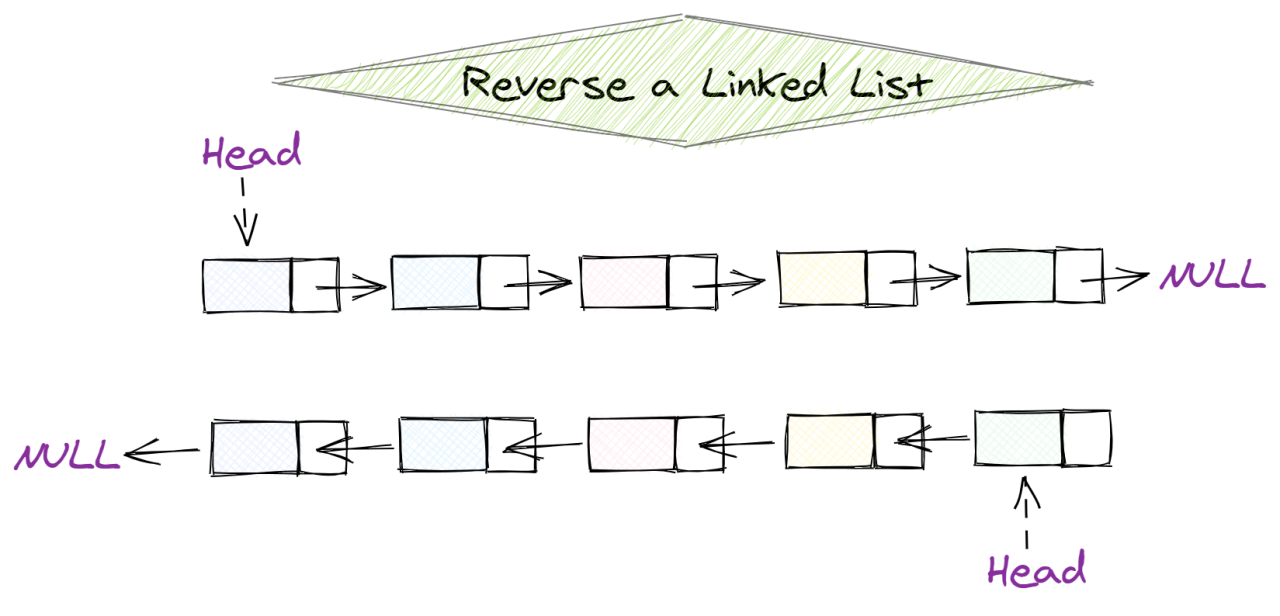
?????????????? ?? ?????????????????????
Santosh Kumar Mishra
Software Engineer at Microsoft | Founder of InterviewCafe | Former Co-Founder of AlgoTutor | Author | Public Speaker | Judge | Featured on Humans of Bombay (2x) & JoshTalks (3x) | Top News Features | All India Topper
We have given the head of a singly linked list, reversed the list, and returned the reversed list.
Whenever I heard “Reverse” problem so, the solution that came to my mind is to use “Stack”. I know that the brute force approach and also takes O(n) extra space.
I hope you are able to identify the intuition behind why I’m using stack. If not go through the principle rule of the stack which is “LIFO” ( Last In First Out). due to its LIFO property, a stack is able to store elements in reverse order of their insertion and hence can be used to solve our problem.
So, how can we proceed further with this approach?:
Push Operation
Push node 1 in stack.
Push node 2 in stack.
Push node 3 in stack.
Now, curr.next == null so we are not going to add node 4 in our stack which is our last node. make That curr Node as “Head”.
Pop Operation
Makes our last node as “Head” node.
Pop node 3 from the stack, and curr.next = stack.pop(). And curr = curr.next.
Pop node 2 from the stack and do curr. next = stack.pop() ,and curr = curr.next.
Pop node 1 from the stack and do curr.next = stack.pop() , and curr = curr.next.
Now, the stack is empty then do curr.next =null.
Brute Force Code:
static Node reverseList(Node head) {
Stack<Node> stack = new Stack<>();
Node curr = head;
while(curr.next != null){
stack.push(curr);
curr = curr.next;
}
head = curr;
while(!stack.isEmpty()){
curr.next = stack.peek();
curr = curr.next;
stack.pop();
}
curr.next = null;
return head;
}
Time-Complexity — O(N)
Space-Complexity — O(N) , N is the number of Nodes in LinkedList.
Iterative Approach:
How can we optimize it much further, How to come up with an optimal solution in an Interview?
Here comes the Iterative Approach, Let’s talk about it.
The idea is to use three pointers?curr,?prev,?and temp to keep track of nodes to update reverse links.
How can we proceed further with this approach :
Now, point curr next to prev.
Update prev to curr.
Now update curr next to temp, where we have store curr.next previously.
And so on…..
Here is our final Linked List.
Code:
class Solution {
public ListNode reverseList(ListNode head) {
ListNode prev = null;
ListNode curr = head;
ListNode temp = null;
while(curr != null){
temp = curr.next;
curr.next = prev;
prev = curr;
curr = temp;
}
return prev;
}
}
Time-Complexity — O(N), N is the number of Nodes in LinkedList.
Space-Complexity — O(1)
Do Follow for More !!
LinkedIn: Santosh Kumar Mishra
Instagram: https://www.instagram.com/iamsantoshmishra
Subscribe to my YouTube channel: https://youtu.be/GP4k31mVcIg
Associate Trainee @SmartData Enterprises| Computer Engineer
2 年Easy explanation ?
Project Engineer @Wipro||Java J2EE
2 年Very Helpful. Thanks for sharing
A freelancer.
2 年Helpfull... share more contents like this????
Software Engineer @GlobalLogic | Former Content Writer @ AlgoTutor
2 年Reach ?? ??
LinkedIn Top Voice '24 ?? | Product Manager | Ex Software Engineer
2 年?? ???? ?????? ??, ???? ???? ?? ??? ???????